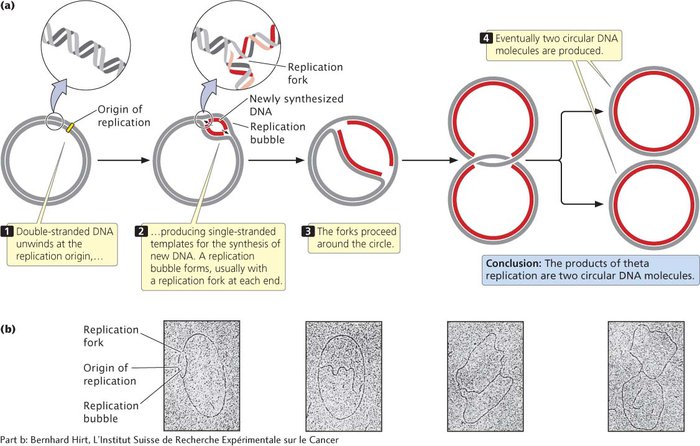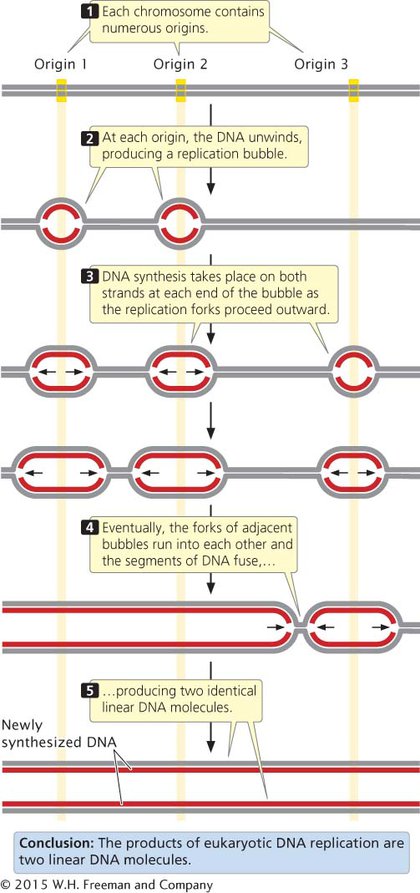Modes of Replication
After Meselson and Stahl’s work was published, investigators confirmed that other organisms also use semiconservative replication. No evidence was found for conservative or dispersive replication. There are, however, several different ways in which semiconservative replication can take place, differing principally in the nature of the template DNA—
A segment of DNA that undergoes replication is called a replicon; each replicon contains an origin of replication. Replication starts at the origin and continues until the entire replicon has been replicated. Bacterial chromosomes have a single origin of replication, whereas eukaryotic chromosomes contain many.

A common type of replication that takes place in circular DNA, such as that found in E. coli and other bacteria, is called theta replication (Figure 9.4) because it generates a structure that resembles the Greek letter theta (θ). In Figure 9.4 and all subsequent figures in this chapter, the original (template) strand of DNA is shown in gray and the newly synthesized strand of DNA is shown in red.
In theta replication, double-
If there are two replication forks, one at each end of the replication bubble, the forks proceed outward in both directions in a process called bidirectional replication, simultaneously unwinding and replicating the DNA until they eventually meet. If a single replication fork is present, it proceeds around the entire circle to produce two complete circular DNA molecules, each consisting of one old and one new nucleotide strand.
Circular DNA molecules that undergo theta replication have a single origin of replication. Because of the limited size of these DNA molecules, replication starting from one origin can traverse the entire chromosome in a reasonable amount of time. The large linear chromosomes in eukaryotic cells, however, contain far too much DNA to be replicated speedily from a single origin. The replication of eukaryotic chromosomes is initiated at thousands of origins.

Typical eukaryotic replicons are from 20,000 to 300,000 base pairs in length. At each origin of replication, the DNA unwinds and produces a replication bubble. Replication takes place on both strands at each end of the bubble, with the two replication forks spreading outward. Eventually, the replication forks of adjacent replicons run into each other, and the replicons fuse to form long stretches of newly synthesized DNA (Figure 9.5). The replication and fusion of all the replicons lead to two identical DNA molecules. Important features of theta replication and linear eukaryotic replication are summarized in Table 9.1.  TRY PROBLEM 19
TRY PROBLEM 19
| Replication model | DNA template | Breakage of nucleotide strand | Number of replicons | Unidirectional or bidirectional | Products |
|---|---|---|---|---|---|
| Theta | Circular | No | 1 | Unidirectional or bidirectional | Two circular molecules |
| Linear eukaryotic | Linear | No | Many | Bidirectional | Two linear molecules |